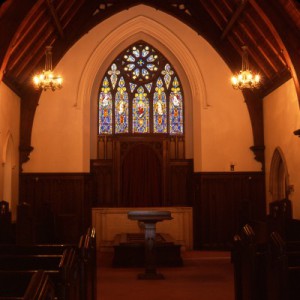 You can see where the coffin sits and where they bring the coffins inside from the exterior.
You can see where the coffin sits and where they bring the coffins inside from the exterior.
Their web site with more images.
 You can see where the coffin sits and where they bring the coffins inside from the exterior.
You can see where the coffin sits and where they bring the coffins inside from the exterior.
Their web site with more images.
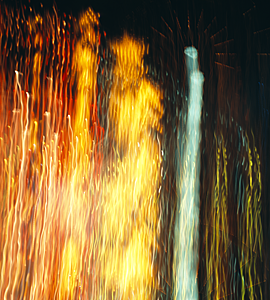
Light painting with camera movement at the Washington State Fair
After accidently tripping a shutter at the Chihuly Center I got on a kick to create some 3d abstracts. Sorry about the lens flare. This was captured at the Washington State Fair. Stars are on a ride in the foreground and the green comet in the background is the center of the grand ferris wheel.
I think I goofed and already have the same or similar image in the other folio. Taken at Palo Duro State Park Texas, September 2012. Taken with the TL120 handheld. Palo Duro Canyon State Park opened on July 4, 1934 and contains 29,182 acres of the scenic, northern most portion of the Palo Duro Canyon. The Civilian Conservation Corps of the 1930’s constructed most of the buildings and roads still in use by park staff and visitors.
The Canyon is 120 miles long, as much as 20 miles wide, and has a maximum depth of more than 800 feet. Its elevation at the rim is 3,500 feet above sea level. It is often claimed that Palo Duro Canyon is the second largest canyon in the United States. The largest, the Grand Canyon, is 277 miles long, 18 miles wide, and 6,000 ft. deep.
Palo Duro Canyon was formed by water erosion from the Prairie Dog Town Fork of the Red River. The water deepens the canyon by moving sediment downstream. Wind and water erosion gradually widen the canyon.
Early Spanish Explorers are believed to have discovered the area and dubbed the canyon “Palo Duro” which is Spanish for “hard wood” in reference to the abundant mesquite and juniper trees.
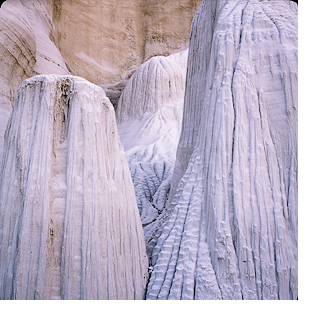
White sandstone formations in the area of the Pillars of Silence
This one reminds me of old-school halloween costumes. All you need is a sheet.
This was taken in the same area as my image, “Approaching the Pillars” from the last round. I hired a photo guide out of Page, Arizona and he would take me around to great spots each morning and evening.
Taken with the TL-120.
This handsome couple is doubly out of sync with both modern times, and the medieval/Renaissance revelers all around them. They were sitting at the bar, near a grounded Pirate Ship boutique, at the PA Renfest last year. If you thought you were viewing some Victorian Costumer movie outake starring Jane Seymour and Gene Wilder, you’re not alone!
I liked the dappled light on the people at the base of Shannon Falls. Shannon Falls Provincial Park is a provincial park in British Columbia, Canada. It is located 58 kilometers from Vancouver and 2 kilometers south of Squamish along the Sea to Sky Highway. How many people can you find?
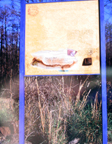
 The fire ignited on the afternoon of September 4, 2011 near Bastrop, Texas with high winds that knocked drought-weary trees into power lines (Bastrop is about 30 miles southeast of Austin). The blaze created a 16-mile-long front line and galloped at 5 miles per hour, speeding through treetops and jumping state roads. It took 250 firefighters from around the country and 160 fire trucks and other equipment three days to contain the fire. The fire devoured 32,400 acres and destroyed nearly 1,700 homes. The endangered Houston toad was believed to have lost the vast majority of its habitat in the fire. The sign in this photo talks about the Houston toad habitat. The irony is that the sign, in the upper left hand corner, says “Enter with care”. This is in Bastrop State Park where the fire consumed 96% of the park which was home to the loblolly pines, known as the lost pines. The park is slowly recovering. My photo, taken in November 2012, shows where the underbrush has already made a quick comeback. I added a photo of the fire, not taken by me.
The fire ignited on the afternoon of September 4, 2011 near Bastrop, Texas with high winds that knocked drought-weary trees into power lines (Bastrop is about 30 miles southeast of Austin). The blaze created a 16-mile-long front line and galloped at 5 miles per hour, speeding through treetops and jumping state roads. It took 250 firefighters from around the country and 160 fire trucks and other equipment three days to contain the fire. The fire devoured 32,400 acres and destroyed nearly 1,700 homes. The endangered Houston toad was believed to have lost the vast majority of its habitat in the fire. The sign in this photo talks about the Houston toad habitat. The irony is that the sign, in the upper left hand corner, says “Enter with care”. This is in Bastrop State Park where the fire consumed 96% of the park which was home to the loblolly pines, known as the lost pines. The park is slowly recovering. My photo, taken in November 2012, shows where the underbrush has already made a quick comeback. I added a photo of the fire, not taken by me.
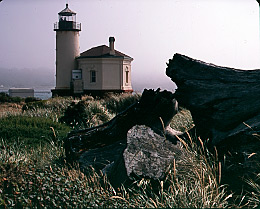
Lighthouse on the Oregon Coast near Bandon
I didn’t get as many photo stops as I would have liked on my drive home from the NSA Convention in Costa Mesa. But I did find this cute lighthouse on the Oregon coast.